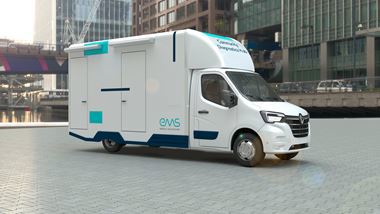Tackling NHS waiting lists and improving patient flow won’t be easy – but a collaborative spirit can succeed
 Jo Quarterman
Jo Quarterman
Published 08 September 2021
 Clinical capacity
Clinical capacity
Could a new way of working help the UK healthcare system to defy expectations and restore the positive patient outcomes lost during the COVID-19 pandemic?
That’s the question everyone in the industry must consider. With imagination, determination and a collective spirit, we are confident a fresh and effective model can emerge – but we must act soon.
Assessing the situation
More than 5.6 million people are currently waiting for NHS elective treatment. Just 68.3% of patients start treatment within 18 weeks (against a target of 92%). And 293,102 have already waited longer than a year for their treatment to begin.
While the need for change may already have existed, COVID-19, of course, has amplified this problem many times over. Yet in some respects, the national pandemic response offers a potential way forward. When confronted with the largest pressures ever known, the NHS, the independent sector and community healthcare services put agility and collaboration at the centre of their response.
As the pandemic begins to recede, this approach should not be abandoned. Instead, it should form the basis of how to develop an enduring strategy for improving patient flow and reducing waiting lists.
Whilst COVID-19 proved devastating for bottlenecks, the warning lights were flashing well before March 2020. The backlog in the UK healthcare system developed over years and the 18-week referral-to-treatment target has not been met since February 2016. The old system was inherently flawed.
Patients cannot afford for the same mistakes to be made all over again – especially when a raft of challenges continue to exacerbate the situation.
- Over the last 12 months, the number of available procedures has been compromised by the ‘pingdemic’, with staff and patients being told to isolate after potential COVID-19 contact. In addition, the need for physical distancing and enhanced infection prevention and control measures further impacted capacity.
- A tired and stretched workforce is undertaking extra shifts in both the NHS and the private sector. It is now indisputable that under-sized workforces are a rate-limiting factor in driving down waiting lists. At the same time, the impact of Brexit is making it even harder to attract and retain staff.
- Limited space within existing facilities and aging equipment add to the difficulty of meeting the rising demand. New ideas for expansion through collaboration across the NHS and independent sectors are needed to overcome this.
- Patients who are on waiting lists for any significant period inevitably decline, making their cases more complex and often leading to more invasive hospital treatment.
The time for action is now
As a sector, we must urgently ask: what can we do now to mitigate potential problems in diagnostics and community services and swerve foreseeable challenges further down the road?
Non-complex routine problems should be diverted to independent hospitals and community settings such as cottage hospitals, static clinics, drive-through clinics and mobile units. To complement this, self-referral systems could be expanded beyond sexual health to services such as physiotherapy, MSK and mental health. This support in elective procedures and community diagnostics would free up GPs for handling urgent referrals for suspected cancer diagnoses and other time-sensitive illnesses.
Earlier community interventions could lessen the number of patients presenting for surgery. This would help to avoid the need for expensive, time-consuming treatment in a hospital setting. Mobile clinics, ISPs and the NHS should urgently act to increase green hub capacity for high volume, low complexity patients.
A mix-and-match approach could ensure theatres and out-patient appointments are not left empty. By increasing throughput, the usable capacity is maximised. The key here is planning. We need to step back and try to reimagine what is possible in six months, 12 months or three years from now. What can we do together to get the right patients where they need to be at the right time?
An opportunity to defy expectations
We are not naïve. We realise all these solutions require an effective strategy, a collegiate approach and a willingness to learn and adjust as circumstances change. But there is the scope to do something special; to answer the call when the pressures facing our healthcare are simply unprecedented.
Northern Devon Healthcare NHS Trust is showing the way. It is giving patients drive-through appointments to collect ECG monitors, saving on clinic time and cleaning costs while providing a more convenient patient experience. This is just one small example, but it illustrates the power of looking at problems from a different perspective.
If leaders from the independent sector, the NHS, GPs and community health providers can formulate a clear plan of how access to care can be improved, we are confident a challenging situation can be turned around quicker than may first seem possible.
More than half of respondents in a National Health Executive survey believe it will take more than three years just to restore elective waiting times to March 2020 levels.
This is an opportunity to defy expectations on an enormous scale – and achieve immeasurable positive benefits for patients across the country. We urge everyone involved to do all they can to grasp this opportunity, however challenging it may at first appear.